Blue Waters Student Internship ProgramCoordinated by Shodor | Blue Waters Interns 2018-2019Nineteen (19) undergraduate students from across the country have been selected to receive support for the Blue Waters Student Internship Program for the academic year 2018-2019. The program provides each student a stipend totaling $5,000, a two-week intensive high-performance computing workshop, and an education allocation on the Blue Waters system. Select students will present posters at the Blue Waters Symposium 2019.
|
Skip to Content


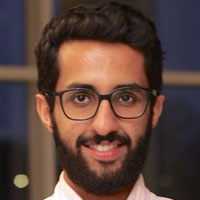 Faisal A. Aldukhi, University of Illinois at Urbana-Champaign, will be studying the binding process of brassinolide, a plant hormone responsible for growth and elongation, to its receptor, BRASSINOSTEROID INSENSITIVE 1 (BRI1), located outside of the cell. Although there have been extensive studies on the steps of this binding, some fundamental questions remained not fully answered about the role of certain amino acids as well as the pathway the hormone takes to bind to the receptor at an atomistic resolution. Faisal wants to provide insights into why BRI1 have a stronger affinity to brassinolide, while molecules, such as castasterone, which is a precursor to brassinolide, have a nearly similar chemical structure to it, and present at higher concentrations, do not bind as well. To answer these questions, Faisal will be using molecular dynamics as well as Alchemical Free-Energy Perturbation methods to simulate the systems.
Faisal A. Aldukhi, University of Illinois at Urbana-Champaign, will be studying the binding process of brassinolide, a plant hormone responsible for growth and elongation, to its receptor, BRASSINOSTEROID INSENSITIVE 1 (BRI1), located outside of the cell. Although there have been extensive studies on the steps of this binding, some fundamental questions remained not fully answered about the role of certain amino acids as well as the pathway the hormone takes to bind to the receptor at an atomistic resolution. Faisal wants to provide insights into why BRI1 have a stronger affinity to brassinolide, while molecules, such as castasterone, which is a precursor to brassinolide, have a nearly similar chemical structure to it, and present at higher concentrations, do not bind as well. To answer these questions, Faisal will be using molecular dynamics as well as Alchemical Free-Energy Perturbation methods to simulate the systems.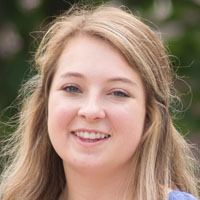 Bryton Anderson, Boise State University, will be studying why transition metal oxides that make great catalysts transform into ineffective structures at the high temperatures where we wish to use them. This project focuses on understanding what chemicals can help prevent the catalysts from transforming without harming the catalyst's ability to perform the desired reactions. Molecular dynamics simulations of small organic molecules on oxide surfaces and within oxide pores will be used to discover the properties of such helpful chemicals.
Bryton Anderson, Boise State University, will be studying why transition metal oxides that make great catalysts transform into ineffective structures at the high temperatures where we wish to use them. This project focuses on understanding what chemicals can help prevent the catalysts from transforming without harming the catalyst's ability to perform the desired reactions. Molecular dynamics simulations of small organic molecules on oxide surfaces and within oxide pores will be used to discover the properties of such helpful chemicals.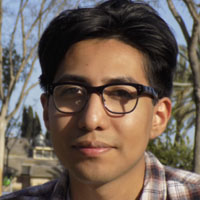 Carlos Barragan, California State University, Fullerton, will search for chemically relevant structures in unexplored regions of the potential energy aspect. A genetic algorithm will work by running trials to create starting molecule populations that are chemically favorable. Starting populations that are better will replace previous populations thereby strengthening the aim that future runs can be improved by learning from previous runs. Learning from previous runs is essential as it will eliminate candidate structure duplication. Most notably, examining what has already been searched will lead us to solemnly focus on unexplored areas. The genetic algorithm will be altered to train an initial population generator. A stoichiometry with a known global minimum will be utilized as a means of comparison. What Carlos hopes to gain from the project is to broaden the search for the global minimum structure of a molecule.
Carlos Barragan, California State University, Fullerton, will search for chemically relevant structures in unexplored regions of the potential energy aspect. A genetic algorithm will work by running trials to create starting molecule populations that are chemically favorable. Starting populations that are better will replace previous populations thereby strengthening the aim that future runs can be improved by learning from previous runs. Learning from previous runs is essential as it will eliminate candidate structure duplication. Most notably, examining what has already been searched will lead us to solemnly focus on unexplored areas. The genetic algorithm will be altered to train an initial population generator. A stoichiometry with a known global minimum will be utilized as a means of comparison. What Carlos hopes to gain from the project is to broaden the search for the global minimum structure of a molecule. Jan Chen, California State University, Fullerton, will work on an evolutionary algorithm of quantum chemical systems. Jan will use machine learning to group together intelligently created candidate structures into chemically reasonable groups. Jan will then apply an evolutionary algorithm to each of these groups where the result from each search will be used to determine the most favorable structure. It is expected that the partitioning of the search space around chemically relevant initial populations should lead to an increase in the rate at which the evolutionary algorithm locates the most favorable structure.
Jan Chen, California State University, Fullerton, will work on an evolutionary algorithm of quantum chemical systems. Jan will use machine learning to group together intelligently created candidate structures into chemically reasonable groups. Jan will then apply an evolutionary algorithm to each of these groups where the result from each search will be used to determine the most favorable structure. It is expected that the partitioning of the search space around chemically relevant initial populations should lead to an increase in the rate at which the evolutionary algorithm locates the most favorable structure. Alaina Edwards, University of Arkansas, is currently pursuing a B.S. in both Mathematics and Physics and a minor in Computer Science. She is currently a member of the Society for Industrial and Applied Mathematics at her college. The project she will be taking on involves the efficient use of High-Performance Computing (HPC) resources for Optimized Computational Fluid Dynamics (CFD). During the project, Alaina will learn how to use the Blue Waters supercomputer to optimize the CFD code for the numerical simulations of compressible fluid flow problems as well as using performance analysis tools to identify performance obstructions and assist in the development of parallelization strategies in the HPC. She will gain a better understanding of the physics behind classical fluid instability and the numerical algorithms used for mixing simulations.
Alaina Edwards, University of Arkansas, is currently pursuing a B.S. in both Mathematics and Physics and a minor in Computer Science. She is currently a member of the Society for Industrial and Applied Mathematics at her college. The project she will be taking on involves the efficient use of High-Performance Computing (HPC) resources for Optimized Computational Fluid Dynamics (CFD). During the project, Alaina will learn how to use the Blue Waters supercomputer to optimize the CFD code for the numerical simulations of compressible fluid flow problems as well as using performance analysis tools to identify performance obstructions and assist in the development of parallelization strategies in the HPC. She will gain a better understanding of the physics behind classical fluid instability and the numerical algorithms used for mixing simulations. Carley Garlasco, Kean University, will be working on the Parallel Stability Analysis of Exoplanetary Systems detected via Radial Velocity. Carley's project focuses on modifying the current codebase that consists of an N-Body integration of planets around a star to determine if the planetary orbits are stable. One of Carley's tasks will be creating a series of N-Body simulations probing the possible candidate planetary system parameters to describe the radial velocity data. In an existing N-Body solver, Carley will be generating input and output routines and converting them from Asteroidal to Cartesian coordinates. On Blue Waters hardware and CUDA hardware, Carley will be modifying the solver to run multiple simultaneous N-Body runs in parallel. In addition, Carley will be using "Mercury" code on Kean's local cluster to run models and compare.
Carley Garlasco, Kean University, will be working on the Parallel Stability Analysis of Exoplanetary Systems detected via Radial Velocity. Carley's project focuses on modifying the current codebase that consists of an N-Body integration of planets around a star to determine if the planetary orbits are stable. One of Carley's tasks will be creating a series of N-Body simulations probing the possible candidate planetary system parameters to describe the radial velocity data. In an existing N-Body solver, Carley will be generating input and output routines and converting them from Asteroidal to Cartesian coordinates. On Blue Waters hardware and CUDA hardware, Carley will be modifying the solver to run multiple simultaneous N-Body runs in parallel. In addition, Carley will be using "Mercury" code on Kean's local cluster to run models and compare. Lakshay Gautam, University of Illinois at Urbana-Champaign, will be working on developing parallel numerical codes for the simulation of energy transport and conversion in nanostructured semiconductor materials and devices. He will proceed to study nanostructured thermoelectric devices for energy conversion with the goal of improving energy conversion efficiency and energy performance in nanoelectronics.
Lakshay Gautam, University of Illinois at Urbana-Champaign, will be working on developing parallel numerical codes for the simulation of energy transport and conversion in nanostructured semiconductor materials and devices. He will proceed to study nanostructured thermoelectric devices for energy conversion with the goal of improving energy conversion efficiency and energy performance in nanoelectronics.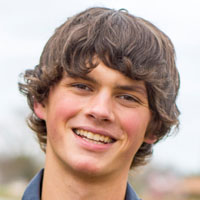 Christopher Harnish, Bluffton University, will study molecular dynamics simulations that track thermally-induced vacancy transitions in hexagonal and face-centered cubic solids. These simulations will also test long time-scale patterns of vacancy locations within solids with induced acoustic standing waves. This will test previous dynamic Monte Carlo simulations which showed higher probabilities of finding defects near anti-nodes of the acoustic wave and offered classical analogs of Born's Law of quantum mechanics. Besides these issues of mathematical physics, Christopher's molecular dynamics simulations for solid state physics will also give him a foundation for later research in materials science and engineering.
Christopher Harnish, Bluffton University, will study molecular dynamics simulations that track thermally-induced vacancy transitions in hexagonal and face-centered cubic solids. These simulations will also test long time-scale patterns of vacancy locations within solids with induced acoustic standing waves. This will test previous dynamic Monte Carlo simulations which showed higher probabilities of finding defects near anti-nodes of the acoustic wave and offered classical analogs of Born's Law of quantum mechanics. Besides these issues of mathematical physics, Christopher's molecular dynamics simulations for solid state physics will also give him a foundation for later research in materials science and engineering.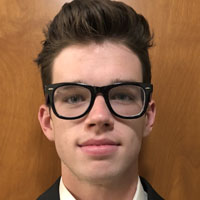 John McGarigal, University of Arkansas, will be working side by side with his professor, Dr. Tulin Kaman, on a project focused on the Richtmyer Meshkov Instability. John will be combing through the code in C++ and C, running tests through the supercomputing system at the University of Arkansas, and working to make the code more efficient. Additionally, the visualization of this instability is key to better understanding it, so John will be taking the output files and using VisIt to make a three-dimensional model of the instability.
John McGarigal, University of Arkansas, will be working side by side with his professor, Dr. Tulin Kaman, on a project focused on the Richtmyer Meshkov Instability. John will be combing through the code in C++ and C, running tests through the supercomputing system at the University of Arkansas, and working to make the code more efficient. Additionally, the visualization of this instability is key to better understanding it, so John will be taking the output files and using VisIt to make a three-dimensional model of the instability.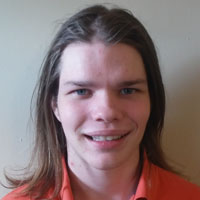 Thomas Mulkey, Georgia Southern University, will develop a general theory of electromagnetic waves in quartic metamaterials so that starting from an arbitrary set of electromagnetic fields, the effective medium parameters for the quartic metamaterial that supports said fields can be determined. Quartic metamaterials are the most general class of metamaterials, and possess quartic k-surfaces, described by 4th order polynomials in k-vector components. Non-reciprocal optical media, complex bi-anisotropic media, and chiral media are examples of quartic metamaterials. The project will include extensive numerical studies of possible quartic metamaterials. Being able to determine the medium parameters starting from a desired set of electromagnetic fields will significantly improve the efficiency of metamaterial engineering.
Thomas Mulkey, Georgia Southern University, will develop a general theory of electromagnetic waves in quartic metamaterials so that starting from an arbitrary set of electromagnetic fields, the effective medium parameters for the quartic metamaterial that supports said fields can be determined. Quartic metamaterials are the most general class of metamaterials, and possess quartic k-surfaces, described by 4th order polynomials in k-vector components. Non-reciprocal optical media, complex bi-anisotropic media, and chiral media are examples of quartic metamaterials. The project will include extensive numerical studies of possible quartic metamaterials. Being able to determine the medium parameters starting from a desired set of electromagnetic fields will significantly improve the efficiency of metamaterial engineering. Preet Patel, University of Michigan - Ann Arbor, is investigating galactic formation through the use of hydrodynamic simulations. He will analyze detailed snapshots of simulated Milky Way-like galaxies using a synergy of spatial, chemical, and dynamical data. The implications of what is found in these simulations will be compared to corresponding observational data with the overarching aim of gaining insight into the formation of various regions of the Milky Way, alongside its genesis as a whole. This project also aims to explore how future astronomical surveys could yield deep insight in the origin of the Milky Way's disk system.
Preet Patel, University of Michigan - Ann Arbor, is investigating galactic formation through the use of hydrodynamic simulations. He will analyze detailed snapshots of simulated Milky Way-like galaxies using a synergy of spatial, chemical, and dynamical data. The implications of what is found in these simulations will be compared to corresponding observational data with the overarching aim of gaining insight into the formation of various regions of the Milky Way, alongside its genesis as a whole. This project also aims to explore how future astronomical surveys could yield deep insight in the origin of the Milky Way's disk system.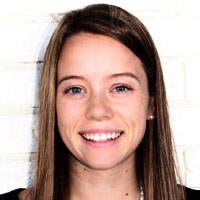 Lauren Pounds, Mississippi State University, will be completing a project analyzing the importance of model physics in simulating environments associated with tornadogenesis within tropical cyclones. Numerous tornado-producing tropical cyclones will be simulated using the Weather Research and Forecasting Model with varied model physics to assess the sensitivity of those simulations on the selection of boundary layer physics and cumulus physics.
Lauren Pounds, Mississippi State University, will be completing a project analyzing the importance of model physics in simulating environments associated with tornadogenesis within tropical cyclones. Numerous tornado-producing tropical cyclones will be simulated using the Weather Research and Forecasting Model with varied model physics to assess the sensitivity of those simulations on the selection of boundary layer physics and cumulus physics.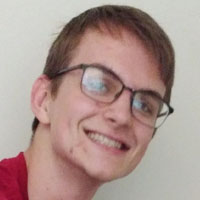 Greg Stroot, University of Illinois at Urbana-Champaign, will be utilizing aeroacoustic analogies, flow-structure interaction solvers, and evolutionary optimization techniques to investigate the properties that affect the silent flight of the owl. It is currently believed that the silent flight is due to the poroelastic properties of the owl's wings, but the physics is poorly quantified. In this study, the goal is to quantitatively characterize the poroelastic flow-acoustic mechanisms underlying silent locomotion through fluids. These insights will enable design for sound by leveraging morphology, elasticity, and porosity. This effort cuts across many areas of high current importance: aviation, drones, acoustic flyer detection, and quality of life in a quiet environment.
Greg Stroot, University of Illinois at Urbana-Champaign, will be utilizing aeroacoustic analogies, flow-structure interaction solvers, and evolutionary optimization techniques to investigate the properties that affect the silent flight of the owl. It is currently believed that the silent flight is due to the poroelastic properties of the owl's wings, but the physics is poorly quantified. In this study, the goal is to quantitatively characterize the poroelastic flow-acoustic mechanisms underlying silent locomotion through fluids. These insights will enable design for sound by leveraging morphology, elasticity, and porosity. This effort cuts across many areas of high current importance: aviation, drones, acoustic flyer detection, and quality of life in a quiet environment.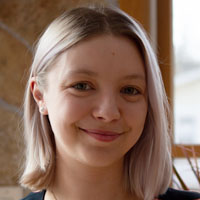 Migle Surblyte, New Jersey Institute of Technology, is developing code to investigate novel mechanisms of blood clot formation using Lattice Light Sheet Microscopy and Lattice Boltzmann Method computational fluid dynamics. Under the guidance of Dr. Roman Voronov, this research seeks to aid the development of anti-thrombotic drugs by furthering the understanding of how blood clots form and what factors lead to their break up. Two leading causes of death in the United States are brain strokes and heart attacks, both of which are caused by bursting blood clots. This research could lead to improved outcomes for the 750,000 Americans affected by these two conditions each year.
Migle Surblyte, New Jersey Institute of Technology, is developing code to investigate novel mechanisms of blood clot formation using Lattice Light Sheet Microscopy and Lattice Boltzmann Method computational fluid dynamics. Under the guidance of Dr. Roman Voronov, this research seeks to aid the development of anti-thrombotic drugs by furthering the understanding of how blood clots form and what factors lead to their break up. Two leading causes of death in the United States are brain strokes and heart attacks, both of which are caused by bursting blood clots. This research could lead to improved outcomes for the 750,000 Americans affected by these two conditions each year.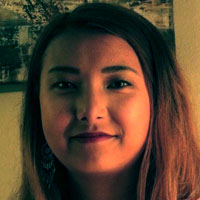 Asma Lama Tamang, Oklahoma State University, will construct a novel, three-dimensional water quality model for Sooner Lake Reservoir, OK, which acts as a cooling pond for a power plant. The buoyancy effects of thermal loadings from a power plant will be simulated using a coupled system consisting of the incompressible Navier-Stokes Equations and the heat equation. The governing equations will be solved using the finite element method with the open-source SU2 code, which consists of a suite of modules written in C++ with extensions to the Python Programming Language. The work will also use parallel computing for simulation of reservoir dynamics and Python to integrate the hydrographic and climate forcing data and post process simulation results.
Asma Lama Tamang, Oklahoma State University, will construct a novel, three-dimensional water quality model for Sooner Lake Reservoir, OK, which acts as a cooling pond for a power plant. The buoyancy effects of thermal loadings from a power plant will be simulated using a coupled system consisting of the incompressible Navier-Stokes Equations and the heat equation. The governing equations will be solved using the finite element method with the open-source SU2 code, which consists of a suite of modules written in C++ with extensions to the Python Programming Language. The work will also use parallel computing for simulation of reservoir dynamics and Python to integrate the hydrographic and climate forcing data and post process simulation results.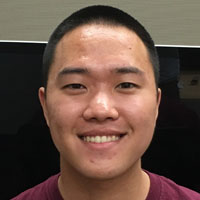 Elliott Vanderford, University of Oklahoma, will utilize molecular dynamics simulations to study Amyloid-β formation in the presence of certain lipid molecules under the guidance of Dr. Ulrich Hansmann. Amyloid-β oligomerization and aggregation is implicated in the pathophysiology of Alzheimer's disease. An example of such oligomers is Large Fatty Acid-derived Aβ Oligomers (LFAOs) studied in a collaborator's lab (Dr. Rangachari at the University of Southern Mississippi). This project focuses on better understanding the structure and propagation of LFAOs through molecular modeling and HPC simulation.
Elliott Vanderford, University of Oklahoma, will utilize molecular dynamics simulations to study Amyloid-β formation in the presence of certain lipid molecules under the guidance of Dr. Ulrich Hansmann. Amyloid-β oligomerization and aggregation is implicated in the pathophysiology of Alzheimer's disease. An example of such oligomers is Large Fatty Acid-derived Aβ Oligomers (LFAOs) studied in a collaborator's lab (Dr. Rangachari at the University of Southern Mississippi). This project focuses on better understanding the structure and propagation of LFAOs through molecular modeling and HPC simulation.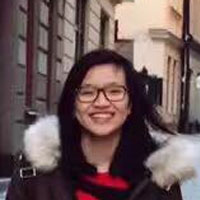 Xiange Wang, University of Illinois at Urbana-Champaign is pursuing a B.S. in Computer Science and Mathematics. She will be using the Blue Waters supercomputer to discover the deep learning enabled structural knowledge under the mentorship of Xinlian Liu. The main task is to create and train deep learning models which predict structural accuracy using protein structural data in an effort to improve the current state of scoring functions. Xiange will explore the performance of 2D and 1D convolutional neural networks (CNNs) trained on data encoded with the method of applying CNNs to classify decoy structures into GDT-TS score groups. Using the method of encoding 3D data into lower-dimensional representations, Xiange will demonstrate that the method allows for decreased CNN training time cost, increased Original 3D model rendering resolutions, and inclusive number of data channels when compared to purely volumetric approaches.
Xiange Wang, University of Illinois at Urbana-Champaign is pursuing a B.S. in Computer Science and Mathematics. She will be using the Blue Waters supercomputer to discover the deep learning enabled structural knowledge under the mentorship of Xinlian Liu. The main task is to create and train deep learning models which predict structural accuracy using protein structural data in an effort to improve the current state of scoring functions. Xiange will explore the performance of 2D and 1D convolutional neural networks (CNNs) trained on data encoded with the method of applying CNNs to classify decoy structures into GDT-TS score groups. Using the method of encoding 3D data into lower-dimensional representations, Xiange will demonstrate that the method allows for decreased CNN training time cost, increased Original 3D model rendering resolutions, and inclusive number of data channels when compared to purely volumetric approaches.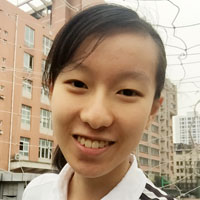 Hanjue Zhu, University of Chicago, will study cosmic reionization. Because of limited observational data, theoretical modeling and numerical simulations play a large part in reionization studies. Computational performance at petascale matches well the need for a realistic reionization simulation. With the help of supercomputers, substantial progress can be expected in the next couple of years. Hanjue will be analyzing the simulation results from the "Cosmic Reionization on Computers" project. The specific work includes accessing simulation snapshots, identifying all resolved dark matter halos, extracting their properties from the simulations, building up histories of individual halos by locating them at different simulation snapshots, and measuring the distributions of ionized and neutral gas in halos of various masses at different simulation epochs.
Hanjue Zhu, University of Chicago, will study cosmic reionization. Because of limited observational data, theoretical modeling and numerical simulations play a large part in reionization studies. Computational performance at petascale matches well the need for a realistic reionization simulation. With the help of supercomputers, substantial progress can be expected in the next couple of years. Hanjue will be analyzing the simulation results from the "Cosmic Reionization on Computers" project. The specific work includes accessing simulation snapshots, identifying all resolved dark matter halos, extracting their properties from the simulations, building up histories of individual halos by locating them at different simulation snapshots, and measuring the distributions of ionized and neutral gas in halos of various masses at different simulation epochs.